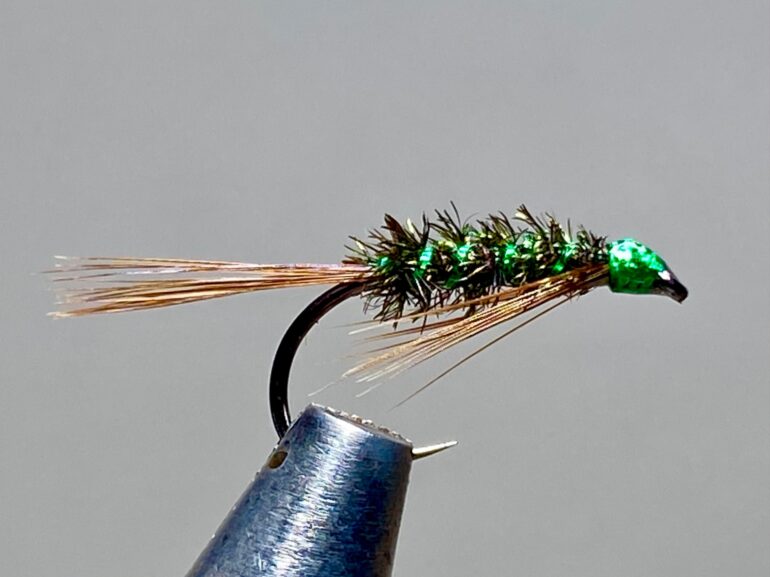
A fly to Tie & Try in August by Les Lockey
Fly of the Month – August by Les Lockey
The Threadless Green Diawl Bach
Hook: Competition Medium, sizes 10 or 12, (from Flybox).
No Thread: – use Hends 0.69 green holographic tinsel,
Tail: Red game cock hackle fibres.
Rib: Hends green holographic tinsel.
Body: Single green peacock herl.
Hackle: Red game cock hackle fibres.
Head: Hends green holographic tinsel.
TYING
- With the hook secured in the vice, leave a 3 inch tag end of tinsel, and start winding the tinsel from the eye to halfway down the shank. Do not cut off the tinsel tag as this will be used for the rib.
- Align the tips of a bunch of cock hackle fibres and tie them in as a tail on top of the shank. Continue to bind down the fibres with tinsel to a point just past the hook point and trim the butt ends to the same length as the body.
- Tie in a single peacock herl leaving the butt end the same length as the body. Secure the peacock herl by binding down the butt end with tinsel to just before the eye and if necessary, remove any excess herl.
- Wind the herl up the shank in touching turns, secure with tinsel at the head and remove the excess herl.
- Bring the tag end of tinsel up the body in an open spiral as a rib. Secure the rib with tinsel and remove the excess tinsel tag.
- Align the tips of a bunch of cock hackle fibres and secure them in as a beard hackle, then remove the waste hackle fibres.
- Tidy the head with tight wraps of tinsel, whip finish, cut away the tinsel and varnish the head to complete the fly.
Tying Tips
- The tying method for this fly is rather unusual in that it uses Hends 0.69 holographic tinsel instead of tying thread to construct the fly. As such, it is likely to prove a true test of your fly tying skills. However, it is essential to use Hends 0.69 holographic tinsel, as all other tinsels are simply not strong enough for the job.
- Hends tinsels come in two sizes: the thinnest being 0.100, and 0.69 which is the one used here. They also come in a variety of different colours, so you can ring the changes if desired. Gold and red versions are well worth having in your fly box.
- Despite its fine dimensions, Hends tinsel is remarkably strong, so don’t be frightened to apply pressure where needed. However, do not add more tinsel wraps than necessary, as this will cause the tinsel to slip. You could, however, wax the underside of the tinsel for additional adhesion if necessary.
- I find the best way of tying this pattern is to simply load the spool of tinsel onto a heavy bobbin holder and then use the tinsel as you would with a bobbin of thread. However, unlike thread, the tinsel must be kept flat and under tension throughout the whole tying process to avoid any slippage, so always unwind any twists before winding the tinsel. Using a heavy bobbin holder will ensure tension is kept on the tinsel even when the bobbin holder is left to dangle while manipulating the other materials.
- A 3 turn whip finish can be done either by hand or with a whip finish tool in the normal manner, but do not be tempted to use more than 3 turns as the tinsel will not pull through.
- Hends holographic tinsels are available online from Tungsten Beads Plus and The Fly Tying Company.
Fishing notes
- This green Diawl Bach is a great alternative to the black version shown last year and is particularly effective during the summer months.
- It can be fished on any density of line, but my preference is for either a floater or sink tip line.
- A favourite method is to fish them slowly as a team of two, one green and one red, but when fish are cruising high in the water, a modified washing line with the green Diawl Bach suspended between two floating flies can be surprisingly effective.
- This pattern can also be used to good effect when fished as part of a team of nymphs with either a weighted nymph or heavy buzzer on the point to get the flies deeper down the water column.
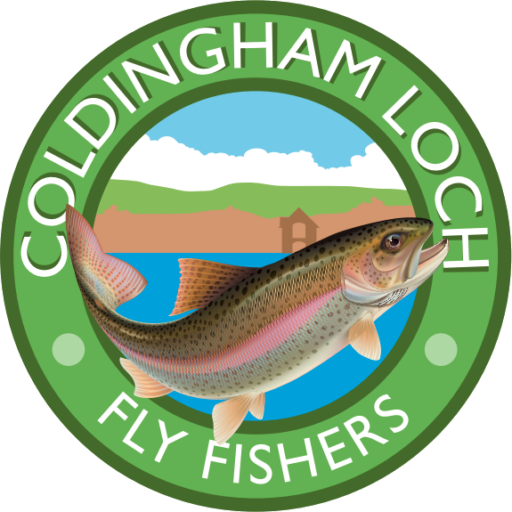

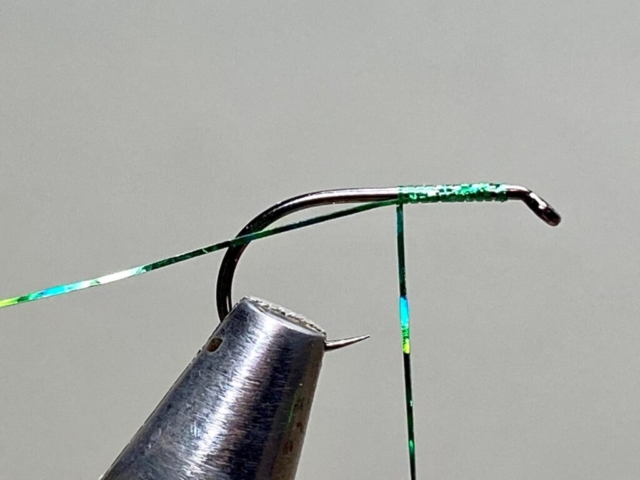

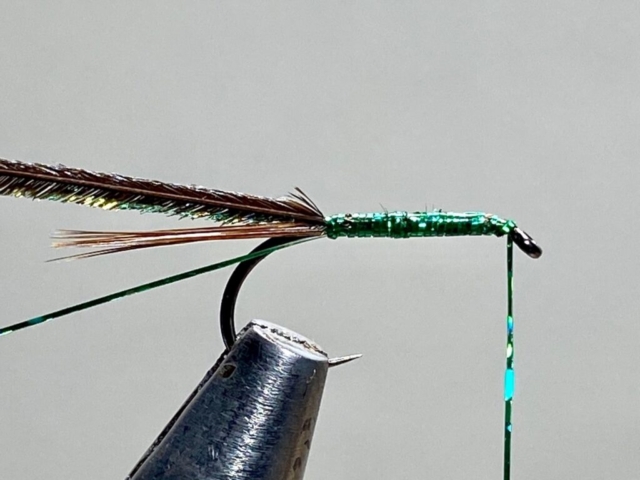
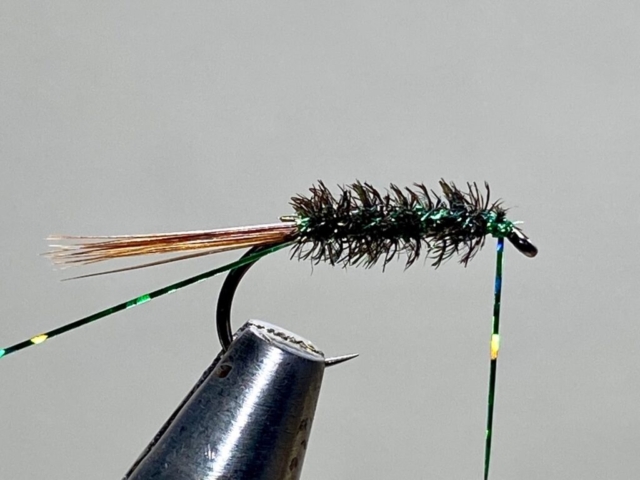
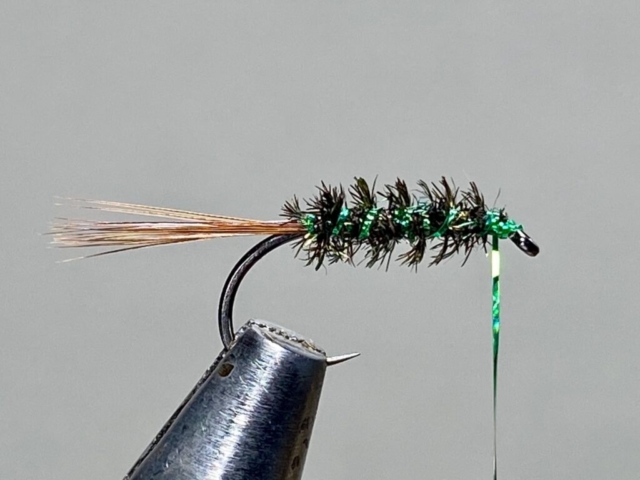



Recent Comments